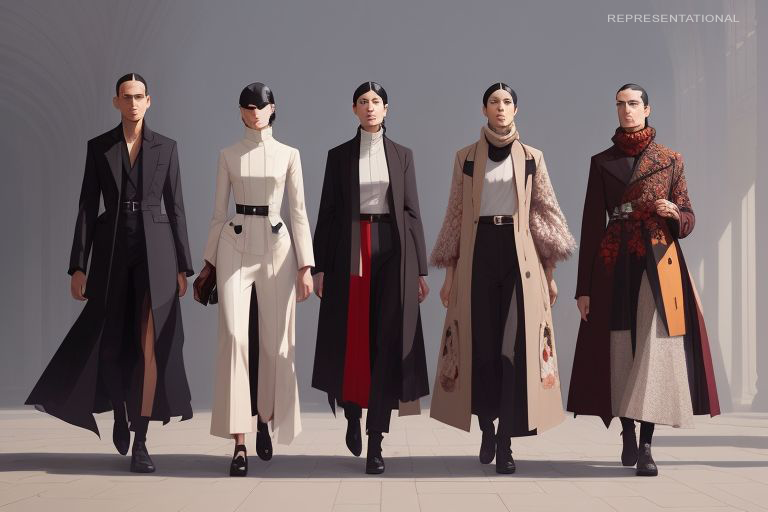
Since the times when Homo sapiens, or more popularly known as human beings, went bipedal, we have been searching for ways to keep ourselves warm against bone-chilling weather conditions. Our first major step towards this goal was using sticks and stones to harness the power of fire, discovering the beauty of arson. The second step was covering ourselves with animal hides. This, with millennia of evolution, developed into modern-day fashion.
What also evolved was the purpose of clothing. It started simply as a way to ensure survival in extreme conditions, yet with time, it became a way to express one’s ideas and ideals.
For example:
• Want to convey your love for mysteries and appreciation for the dark aspects of your life, or your rejection of mainstream trends? You are looking for the Goth style, my friend.
• Want to convey your sophisticated, elegant, and graceful nature without looking overdone? Chic style is the beat you would love to dance to.
• Want to express your love for the simple things in your life, emphasizing mindfulness and intentionality in your wardrobe? Minimalistic fashion is the way to go.
In this article, our main goal is to let you know about the different fashion movements throughout history and what they represented:
- Baroque Movement (1600–1750):
Taking you back to your High School Textbooks (It hurts us more than it hurts you), Let’s talk about the Baroque movement which emerged during a time of grandeur and artistic flourish across Europe, influenced by the Catholic Counter-Reformation and the rise of absolutist monarchies like that of Louis XIV of France.
Baroque fashion expressed power, wealth, religious devotion, and artistic grandeur. Monarchs like Louis XIV used elaborate clothing as a tool to project authority, while expensive fabrics and intricate designs showcased economic power and privilege. - Rococo Movement (1720–1770):
Humans have always had a tendency to oppose authority, rebellion being in our blood, and this tendency is reflected in our fashion as well. One example is the Rococo movement, which came as a response to the rigid grandeur of the Baroque era.
Rococo fashion symbolized the carefree, indulgent lifestyle of the aristocracy. It emphasized beauty, intimacy, and romantic ideals, in contrast to the imposing and serious Baroque style. The lightness of Rococo clothing also mirrored the period’s fascination with nature, art, and the pleasures of life. - Neoclassical Movement (1780–1820):
After talking about the aristocracy, it’s only natural to talk about what the believers in democracy were thinking. The Neoclassical movement arose during the Enlightenment and was heavily influenced by the rediscovery of Greco-Roman art and architecture.
This style reflected rationality, simplicity, and the democratic ideals of the era, rejecting the excess of Rococo fashion. Women’s Grecian-inspired dresses symbolized purity and intellectual refinement, while men’s tailored attire conveyed discipline and modesty. - Victorian Movement (1837–1901):
Skipping to the times of industrialization, let us talk about Victorian fashion, which coincided with Queen Victoria’s reign (go figure) and reflected the values of industrial progress, strict morality, and social order. The growing middle class also began to emulate aristocratic styles.
It symbolized modesty, propriety, and wealth. Mourning fashion, dictated by Queen Victoria’s long grief for Prince Albert, introduced the concept of structured grief in attire. - Art Deco Movement (1920–1939):
Let’s go further down the timeline, to after World War I. What emerged from those troubling times was the Art Deco movement, which reflected optimism and a return to glamour, led by designers like Christian Dior with his “New Look.”
It represented post-war prosperity, femininity, and a celebration of traditional roles. - Punk Movement (1970s):
So, remember what I said about our tendency to rebel? Yeah, punk is here. It emerged as a reaction against mainstream culture, driven by music and anti-establishment attitudes.
Its DIY approach was a rejection of mass-produced consumer culture, while the rough and unpolished aesthetic reflected disdain for societal expectations. Slogans and designs often carried political or social messages, making clothing a platform for protest.
All these movements were meant to express oneself. Sometimes it was to express authority, while other times to rebel against established authority. Sometimes it was to express grandeur and sophistication, while at other times it was to express simplicity. And at times, it emerged from the ashes of an old kingdom, expressing our optimism for a new, better, and kinder world to come.
This is where our goal lies as well. For you see, we at Hiding Frog wish to be a platform that provides our customers a way to express themselves. Our goal is to see our customers express their ideas and ideals through our products. Whether it is with the “Fool”, which supports you in your new start, or the “Procrastinator”. for those who want to take a break from their never-ending work life.
Life is full of surprises and never the same, and we are here to ensure that you look glamorous while handling every single situation.
